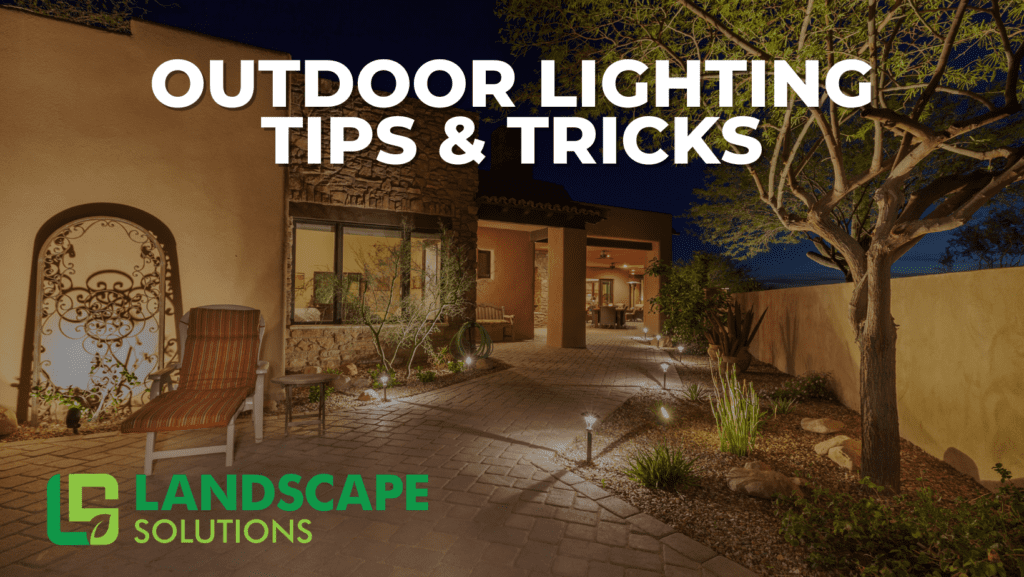
Creating the perfect outdoor ambiance requires more than just beautiful plants and well-manicured lawns; it also involves strategic lighting. Outdoor landscape lighting can highlight your property’s best features, enhance security, and extend the usability of your outdoor spaces after dark. However, there are certain dos and don’ts to remember to achieve the best results. Here’s a comprehensive guide to help you maximize your landscape lighting.
Do Focus on Lighting the House First
When planning your landscape lighting, start with the primary focus of your property: your house. Your home’s architecture is the most significant and expensive part of your property, and illuminating it correctly should be your top priority. Use appropriate outdoor light fixtures to highlight the walls, architectural features, and entry points. Illuminating pathways and entrances not only enhances the beauty of your home but also provides safety and security.
Don’t Overdo It
While it might be tempting to add a lot of lights to create a bright, welcoming atmosphere, grouping too many fixtures in one space can backfire. Over-lighting can create glare and distract from the overall aesthetic. The goal is to highlight features subtly, not overwhelm the viewer with bright lights. Balance is key; less can often be more in landscape lighting.
Do Take Advantage of Multiple Layers
To achieve a dramatic and visually appealing effect, use multiple layers of light. Instead of grouping many fixtures together, position several spotlights at different angles to highlight specific features like garden statues or topiaries. This approach creates depth, reveals silhouettes, and adds a dynamic element to your landscape.
Do Get Creative With Pathway Lighting
Pathway lighting doesn’t have to be boring or overly uniform. Avoid placing lights in a straight line, as this can look monotonous. Instead, stagger the lights to create a more interesting pattern. You can also use motion sensor lights that activate as someone walks by, adding an element of surprise and functionality. This not only guides visitors but also enhances the safety of your walkways.
Don’t Choose the Wrong Bulbs
Choosing the right type of bulb is crucial for energy efficiency and longevity. Incandescent bulbs consume a lot of energy and have a shorter lifespan than other options. Furthermore, bulbs with too high a wattage can create an unattractive glare. Opt for bulbs with 40 to 75 watts for outdoor fixtures. This will provide sufficient illumination without being harsh or glaring.
Do Opt for LEDs
LED lighting has come a long way and now offers a range of colors and tones, including warm hues. LEDs are energy-efficient and have a much longer lifespan compared to incandescent bulbs. To avoid glare, use soft, downward-focused lighting. This creates a warm, inviting atmosphere without the harshness that can come from more intense bulbs.
Don’t Ignore the Small or Out of Sight Spaces
When planning your landscape lighting, don’t overlook the less obvious areas, like the second floor of your home or dark corners of your yard. When illuminated, these spaces can enhance security and add to the overall aesthetic appeal. Ignoring these areas can leave your property incomplete and create potential safety hazards.
Do Use Accent Lights
Accent lights are perfect for highlighting dark corners or small areas that might otherwise go unnoticed. These lights can add an extra layer of beauty to your landscape and help deter potential intruders by eliminating hiding spots. Accent lighting can also be used to highlight specific plants, water features, or other unique elements in your garden.
Additional Tips for Effective Landscape Lighting
Replace Thirsty Turf with Groundcovers
For an eco-friendly approach, replace high-maintenance turf with drought-tolerant groundcovers like creeping thyme or sedums. These plants are tough enough to walk on and require much less water and maintenance.
Amend Soil for Better Plant Health
Amending your soil with compost and organic matter can help retain moisture and improve plant health. For plants that prefer lean soil, avoid enriching amendments, but ensure the soil is loosened and well-draining.
Create Multi-Seasonal Interest
Choose plants with interesting foliage, texture, structure, and contrasting shapes to maintain visual interest throughout the year. This approach ensures your garden looks appealing even when flowers are not in bloom.
Use Mulch to Retain Moisture
Mulch your plants with organic matter or small stones to suppress weeds and retain moisture. This helps reduce the need for frequent watering and keeps your plants healthy.
Install Efficient Watering Systems
To complement your drought-tolerant plants, consider installing efficient watering systems like drip irrigation. Water early or late in the day to minimize evaporation and ensure your plants receive the moisture they need.
Integrate Hardscaping Elements
Add structure and define spaces in your landscape with hardscaping elements like boulders, patios, and pathways. Augment these features with decorative touches such as benches, birdbaths, or fountains to create focal points. Use permeable materials for pathways to slow water runoff and enhance sustainability.
Outdoor landscape lighting, when done correctly, can transform your garden into a magical space after dark. By focusing on your house first, using multiple layers of lighting, opting for energy-efficient bulbs, and not overlooking small or hidden areas, you can create a stunning and secure outdoor environment. For expert guidance and professional installation, contact Landscape Solutions at (615) 852-5009 or visit our website. Let us help you illuminate your outdoor spaces beautifully and efficiently.



